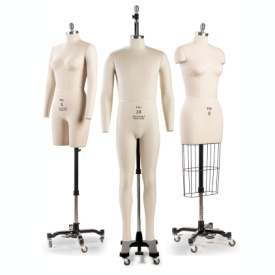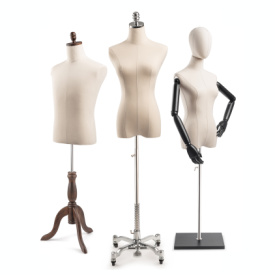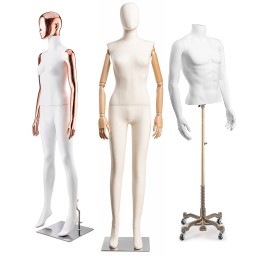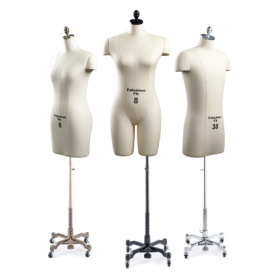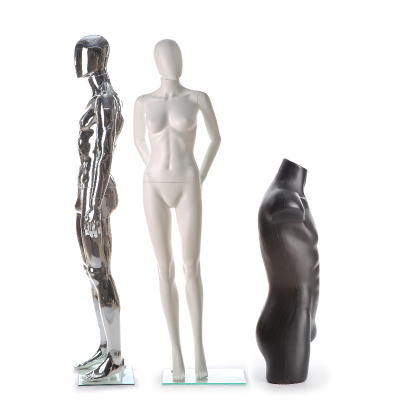

What is a mannequin and how is it used?
There are many types of mannequins. Here at The Shop Company we deal with what are called "fashion mannequins". Fashion mannequins are basically molded representations of the human (or animal) body. These mannequins are used for one (or both) of the following:
- To demonstrate how apparel would sit and feel on the human body. Retail is all about spurring the imagination of the customer - the more the retailer feeds the customer's imagination about how they can use the product, the better chance he/she has at making the sale. When people shop for clothing they are not looking for what looks and feels good, they are searching for what will look and feel good on them. Apparel folded neatly on a product table does quite little to the imagination. This same product shown being worn by a human? a whole different story. There is now more food for the imagination. However, hiring models to strut around your store wearing your products is pretty expensive. Enter the mannequin - low purchase price, little maintenance (if you purchase the mannequin from a reliable company), does not get moody, need health insurance, lunch breaks, and it will not gain weight. Mannequins are the ultimate substitute for the human model.
- To get the shopper's attention. This one surprised us a little. We try to build a lasting relationship with our customers. While following up on some of their purchases (and answering many of their questions) we found that often our mannequins were being purchased simply to attract customers to the products sold by the retailer even though these products had nothing to do with apparel. For example, a certain motorcycle shop purchased many seductive-looking female mannequins to sit on - or stand next to - their bikes. Customers notice the mannequins and then the bikes these mannequins seem to be riding. The method behind this use is also to inspire the imagination ('this bike will get you this woman'), however it is not used to sell anything worn by the mannequin, rather to sell a product related to the mannequin.
Full body or sectional?
Full body mannequins are very impressive and are therefore great attention grabbers. Full bodies also add excellent character and aesthetics to a store. Sectionals, such as torsos, hands, head, feet, etc., are not as impressive but are cheaper on space and money. Sectionals will also keep the shopper's focus on how the clothes look and feel on an actual body (see following section - "Realistic or abstract?").
Realistic or abstract ?
Realistic mannequins are those which are designed to emulate the appearance of a real person. Generally, a full body mannequin (and not sectional) with a realistic-looking skin color (Caucasian, African, etc.) and realistic facial and body features. Headless or egghead mannequins are not considered realistic and are classified as abstract. Even a full body mannequin with complete facial features yet is entirely pure white or chrome is also considered abstract.
Ultimately, choosing either one is just a matter of taste. Some retailers go with the realistic look while others go with the abstract. Here are several pros and cons to consider with each of the classes. Realistic models are striking in their beauty and will do the best at demonstrating how the clothes look on an actual human, yet they might be too striking and actually detract the shopper's focus to the whole figure instead of the clothes it is wearing. Abstract mannequins will keep the shopper's focus on your products it is wearing but might not give the same picture of how the clothes will look on a real person. Abstract mannequins are also chosen to add class and uniqueness to the store's character. However, as mentioned before, both mannequin classes work well.
These are realistic mannequins:
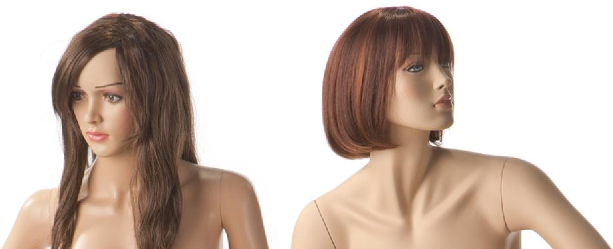
and these are considered abstract:

Plastic or Fiberglass?
This is one of our most popular questions. Below, we have crafted a highly detailed comparison between the two mannequin materials. Please note that while the following applies to our mannequins it may not necessarily reflect on those sold by another company.
| Fiberglass | Plastic | |
|---|---|---|
| Appearance | 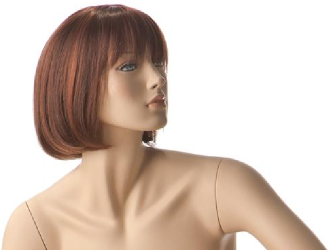 |
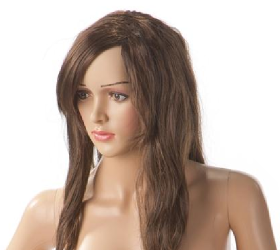 |
| Fiberglass is the hands-down winner in looks. In the realistic models, it looks the most realistic, and in the abstract ones, it looks the most striking. Our plastic models are also pretty realistic and striking (as in the picture above) however - at least to us - is the clear winner in the looks department. | ||
| Pricing | Our fiberglass models are a bit more expensive than many of our plastic ones. However, there are some plastic mannequins, such as our chrome line, which costs more than fiberglass (the chrome coating is expensive to make). | |
| Durability | We sometimes call our plastic line - indestructible. Plastic mannequins can take quite a bit of abuse and not show it at all. The fiberglass models, while quite strong, are still more delicate than the plastic mannequins. Extensive abuse can lead to scruff marks (most of which can be rubbed off) or even chipping. Generally, we advise to place the fiberglass mannequins away from the customer flow. | |
| Flexibility | Our plastic mannequins are made to allow the head and arms to rotate (360°!). The fiberglass parts are set and cannot be altered from the position we show them in. | |
| Base | The base for the plastic mannequins attaches through the calf, while that of the fiberglass mannequins offers a choice to connect through the calf or heel. Additionally, the base of the plastic mannequins is made of glass, while that of the fiberglass is made of brushed steel. | |
